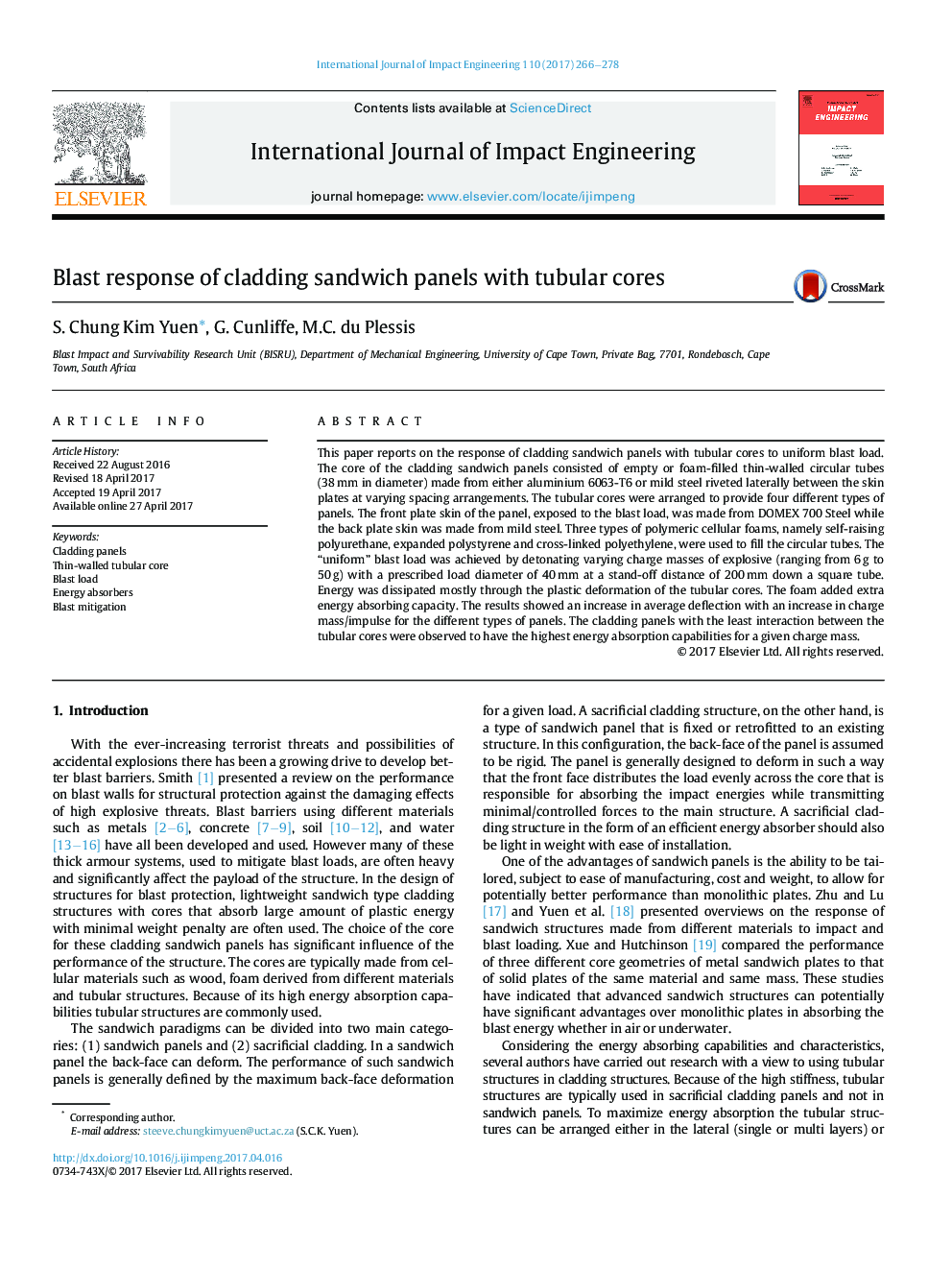| Article ID | Journal | Published Year | Pages | File Type |
|---|---|---|---|---|
| 7173095 | International Journal of Impact Engineering | 2017 | 13 Pages |
Abstract
This paper reports on the response of cladding sandwich panels with tubular cores to uniform blast load. The core of the cladding sandwich panels consisted of empty or foam-filled thin-walled circular tubes (38Â mm in diameter) made from either aluminium 6063-T6 or mild steel riveted laterally between the skin plates at varying spacing arrangements. The tubular cores were arranged to provide four different types of panels. The front plate skin of the panel, exposed to the blast load, was made from DOMEX 700 Steel while the back plate skin was made from mild steel. Three types of polymeric cellular foams, namely self-raising polyurethane, expanded polystyrene and cross-linked polyethylene, were used to fill the circular tubes. The “uniform” blast load was achieved by detonating varying charge masses of explosive (ranging from 6Â g to 50Â g) with a prescribed load diameter of 40Â mm at a stand-off distance of 200Â mm down a square tube. Energy was dissipated mostly through the plastic deformation of the tubular cores. The foam added extra energy absorbing capacity. The results showed an increase in average deflection with an increase in charge mass/impulse for the different types of panels. The cladding panels with the least interaction between the tubular cores were observed to have the highest energy absorption capabilities for a given charge mass.
Related Topics
Physical Sciences and Engineering
Engineering
Mechanical Engineering
Authors
S. Chung Kim Yuen, G. Cunliffe, M.C. du Plessis,
